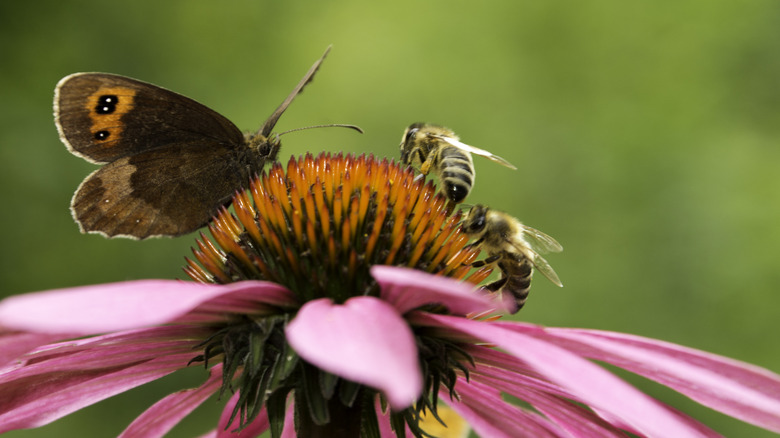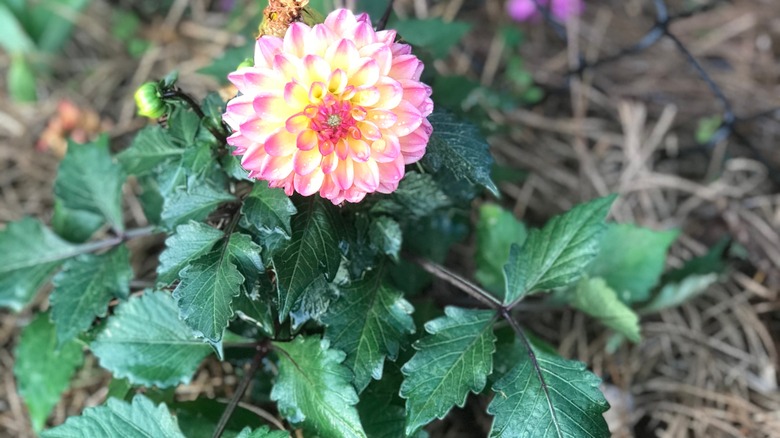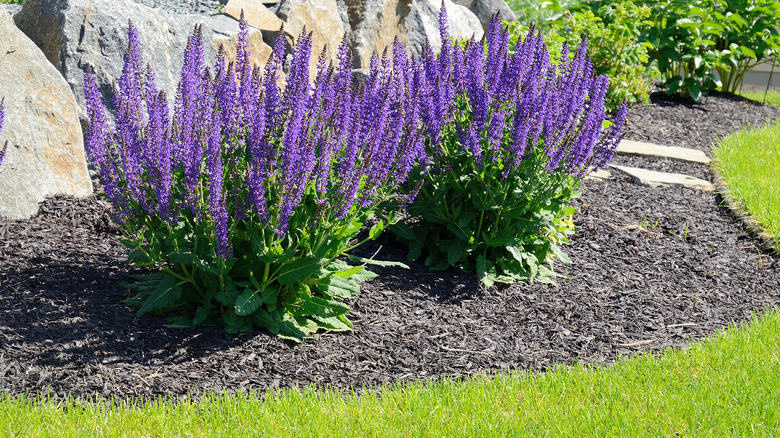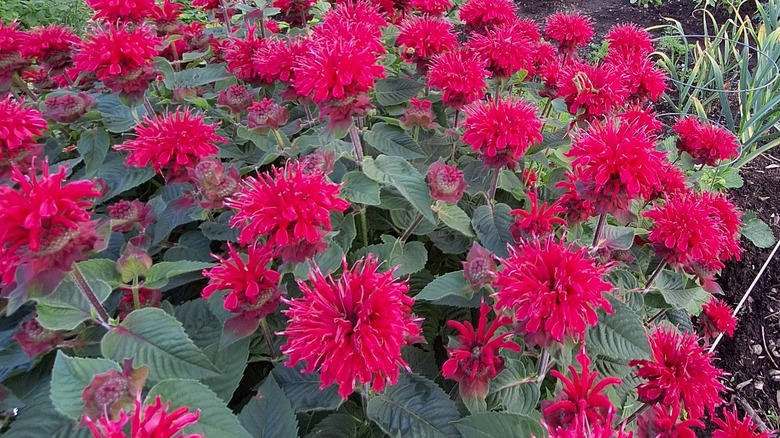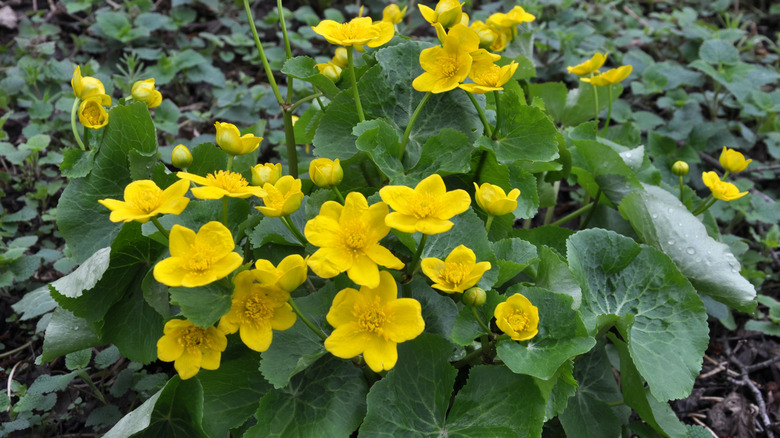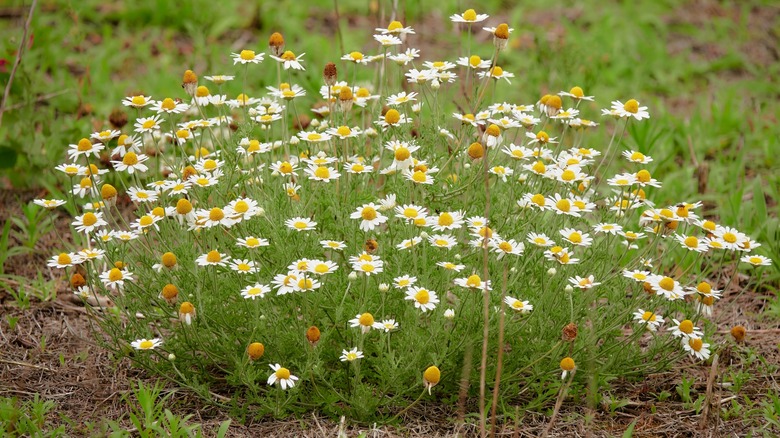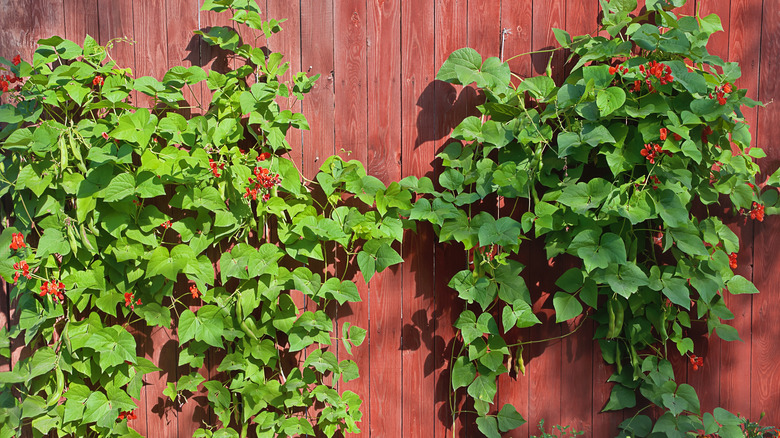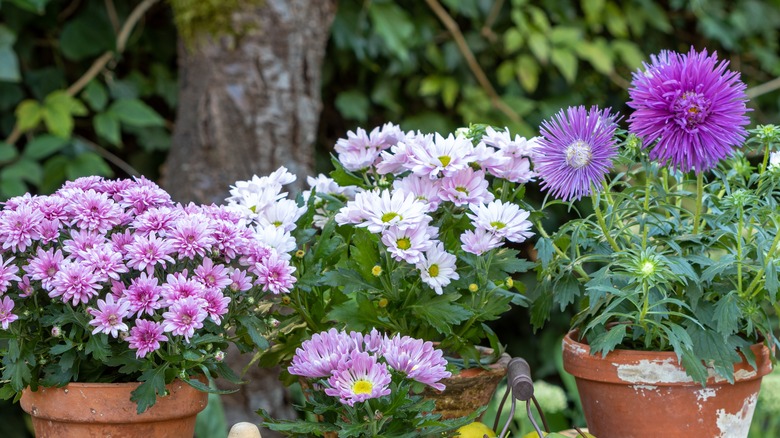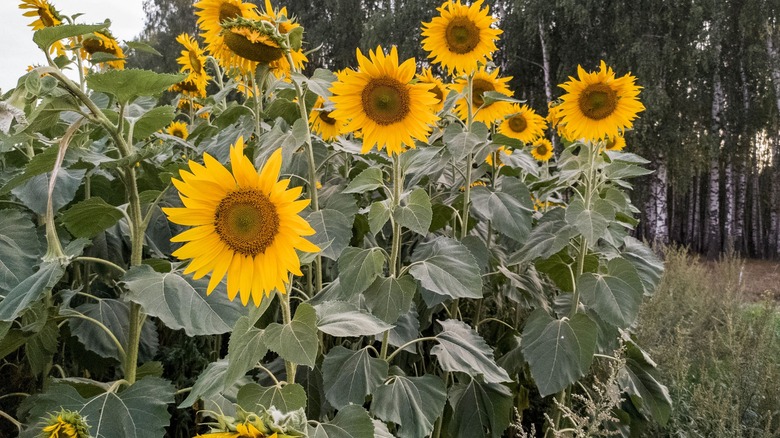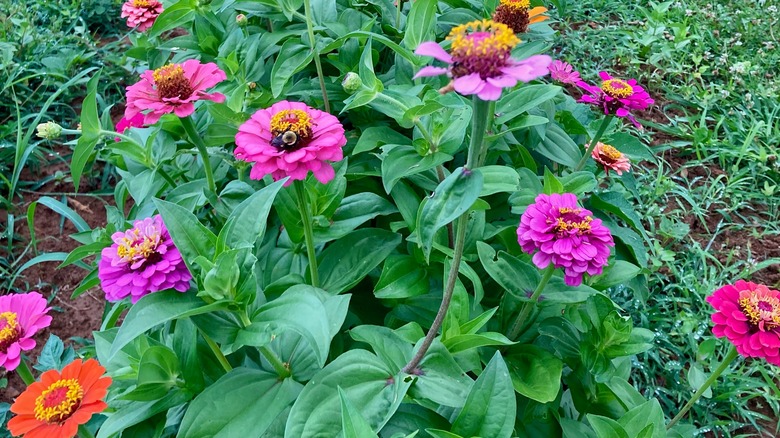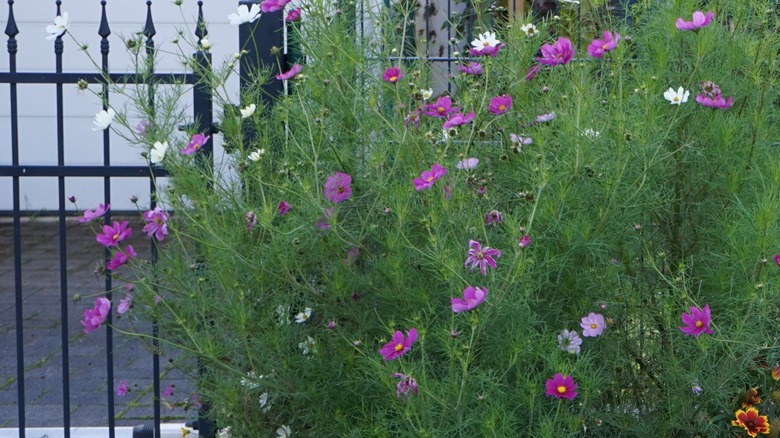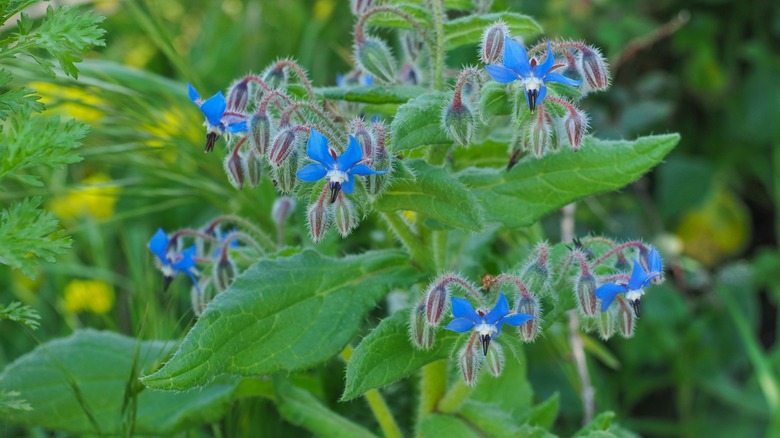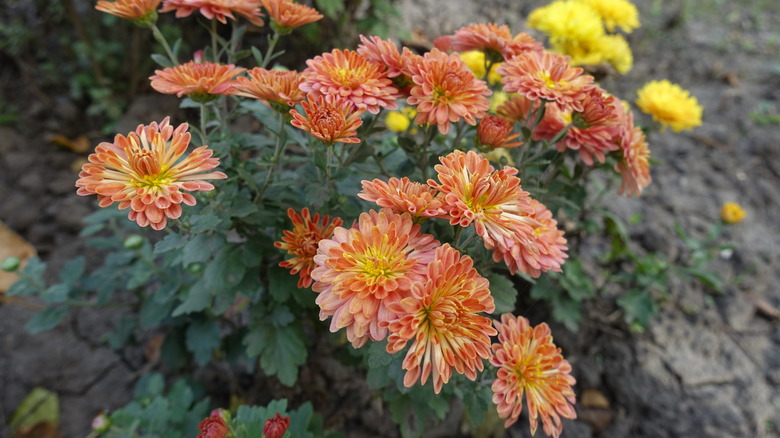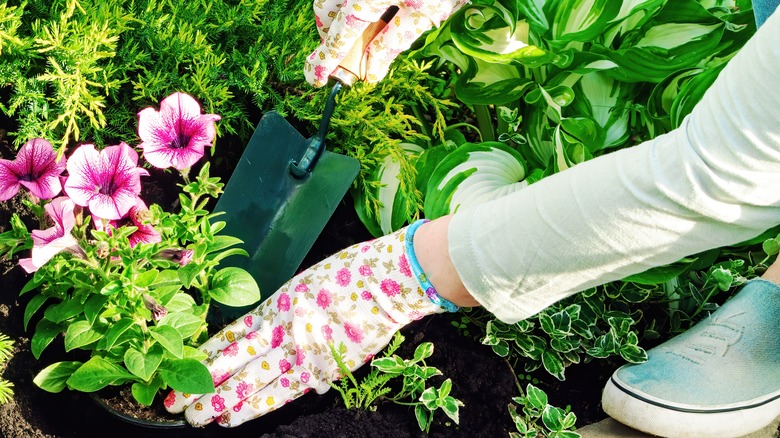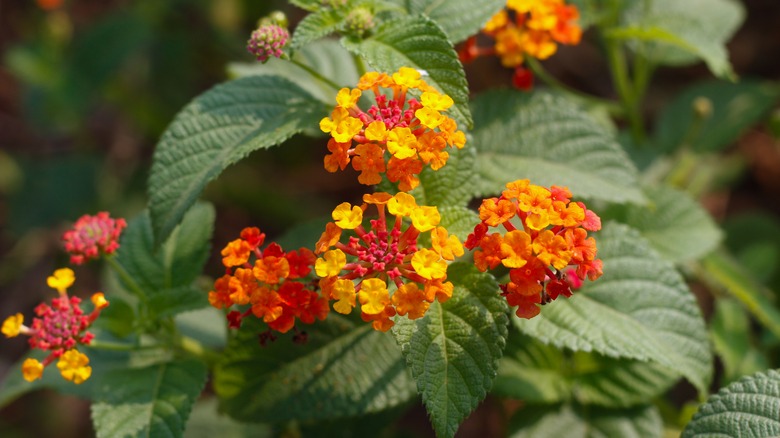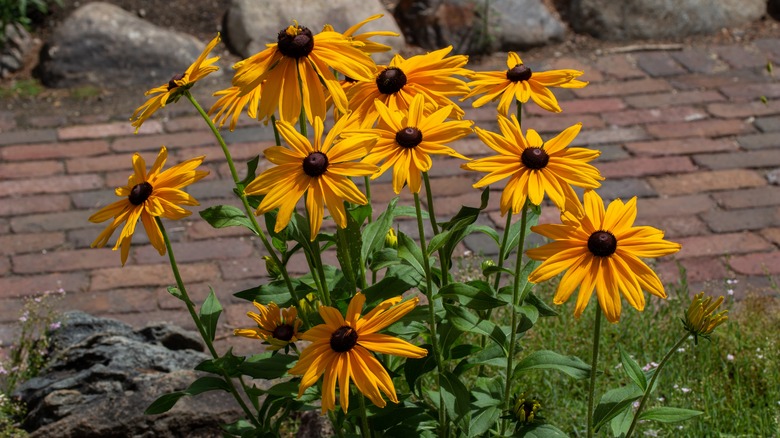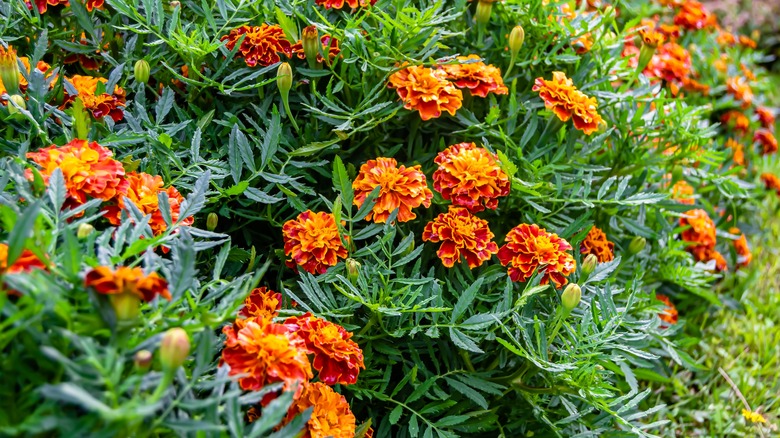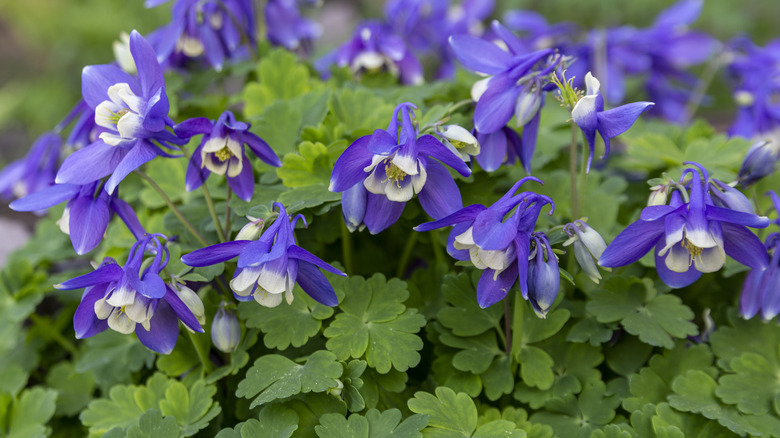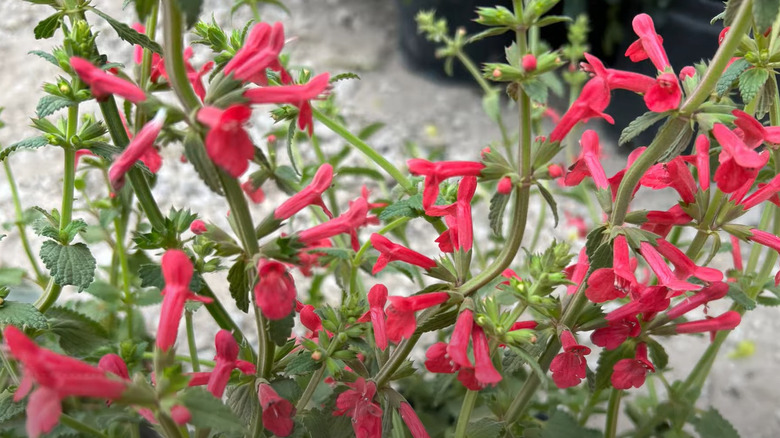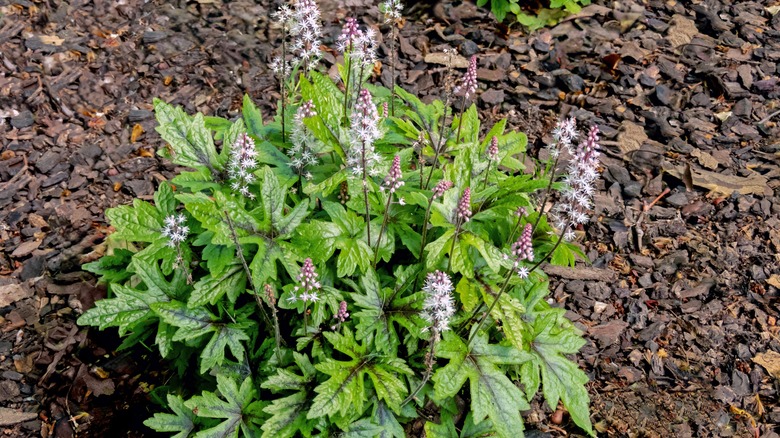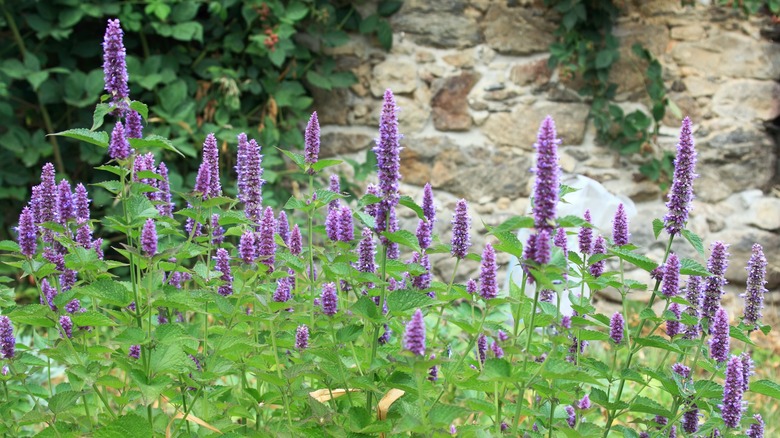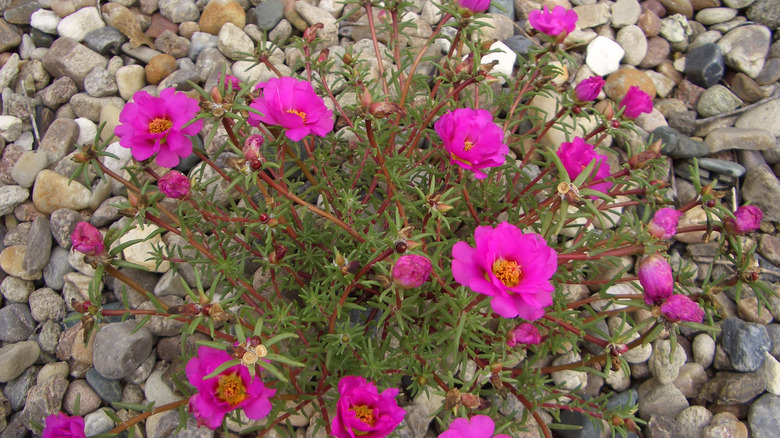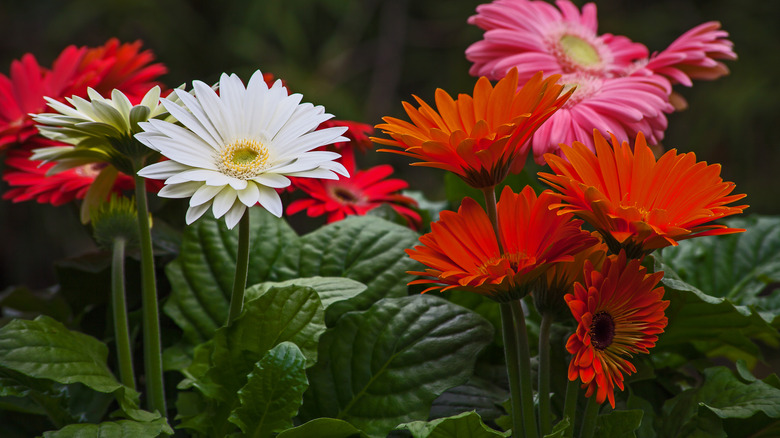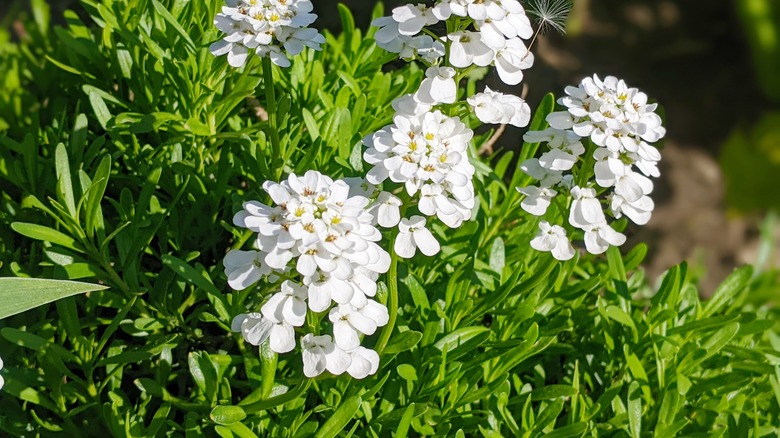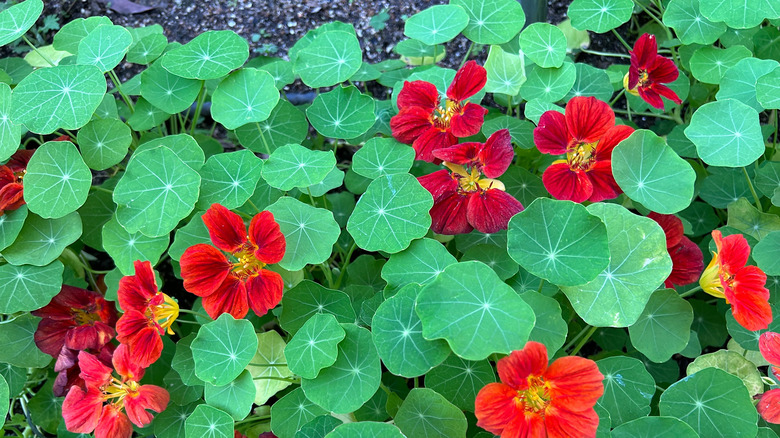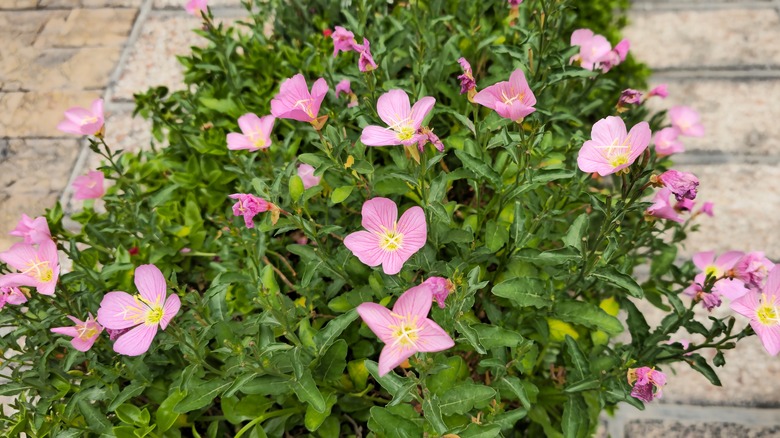26 Flowers That Attract Pollinators And Are Easily Grown From Seed
So you want to bring more pollinators into your yard and garden but don't fancy becoming a plant whisperer or devoting every waking moment to the cause? Lucky for you, today, we're diving into 26 pollinator-friendly flowers that can be easily grown from seeds. From the fiery oranges and reds of marigolds to the bright yellows of sunflowers, these splashes of color do more than glam up your space — they're like the cool neon signs inviting bees, butterflies, and hummingbirds over, helping your garden thrive with a bounty of fruits and all that good biodiversity stuff.
However, the cool factor of these beauties goes beyond their looks and easy-to-grow credentials. Among them are overachievers like nasturtiums, whose blooms add a peppery kick to your salads. Then you have chamomile flowers, ready to be steeped into soothing teas. And let's not forget the natural pest repellents like marigolds, which save you from going all in with synthetic chemicals.
But you've got to think about who's standing next to whom in your garden when picking these flowers. For instance, the majestic sunflowers can loom large behind lower-growing gems, creating a tiered effect that makes your garden scene pop. Consider mass planting these pollinator magnets for a boost in wow factor or interspersing them with your veggies for a patch that's not just a feast for eyes but a powerhouse of productivity and health.
1. Dahlias
Dahlias are showstoppers that bring liveliness to dull yards in summer with large blooms in purple, pink, yellow, and white, drawing the coolest crowds to your garden — think butterflies, hummingbirds, and bees. Dahlias thrive in rich, well-draining soil in USDA zones 7 through 10. Start the seeds indoors a month or so before the frost bows out, then move the seedlings with a couple of leaves outdoors. Dahlias might need some support as they grow, so consider staking them. Deadheading keeps the blooming going, while thinning the stems keeps things looking tidy.
2. Salvia
Fancy a culinary delight easily grown from seed that doubles as a hotspot for your local pollinators? Meet salvia, or sage, as most of us call it. It typically stretches up to 3 feet high, sporting red, purple, white, or pink tubular flowers. It's more than just eye candy, because hummingbirds and bees can't seem to resist them. Sage prefers the protection of a sheltered, free-draining spot in USDA zones 5 through 10. Some species are principally ornamental and fare better when given a head start indoors and transferred outdoors after the frost once they reach 4 inches.
3. Bee balms
If you want your garden buzzing with life, crimson bee balm (Monarda didyma) could be your new friend. This plant is a magnet for bees and butterflies with purple, pink, or red blossoms from May to September. And if you're into herbal teas, these flowers are your golden ticket. A sun-worshipper that's cool with a bit of shade in USDA zones 4 to 9, bee balm isn't picky about soil pH. And when frost has left, you're good to get these beauties in the ground, where the soil drains well. Trimming in early summer encourages bushier growth.
4. Marsh marigolds
The little charmer that is marsh marigold (Caltha palustris) is a springtime show-off easily propagated from seeds. It's a magnet for bees, hoverflies, and hummingbirds thanks to vibrant yellow flowers with generous offerings of nectar and pollen. These are sun-lovers that thrive in zones 3 to 7 and love their soil well-drained. However, they are thirsty for constant moisture, making them perfect plants for your natural water features, like rain gardens or pond edges. Here's a friendly heads-up: Despite the inviting appearance, the vibrant green leaves pack a toxic punch if eaten raw, courtesy of the protoanemonin chemical.
5. Chamomile
Chamomile is the chameleon of the pollinator magnets, effortlessly growing in borders, veggie gardens, container gardens, and herb plots. In summer, it bursts into fragrant blooms, each with a golden cone hugged by white petals. These flowers are beacons for bees and butterflies and a secret ingredient for soothing teas. You'll want to sprinkle chamomile seeds on well-drained soil come fall, preferably together with cabbages and onions for that extra flavor boost. While the plant is not fussy about soil quality, occasional watering keeps it happy. Trimming away any straggly stems and fading flowers keeps it tidy and blooming.
6. Scarlet runner bean
Originally a dinner staple, the scarlet runner bean (Phaseolus coccineus) has taken on a new life as a garden beauty, dazzling with bright red blooms that draw in hummingbirds and bees. This perennial shoots up annual vines of green, heart-shaped leaves that can turn simple chain-link fences into privacy greeneries. When the threat of frost has passed, scatter your scarlet runner seeds 4 to 8 inches apart in a fertile, well-draining, sun-drenched area. To keep it flowering, remove the pods as they form. You could alternatively let some mature to harvest the edible beans inside.
7. Asters
As good container-dwellers, asters prove that you don't need a prime plot to successfully grow flowers from seeds. Flowers ranging from bright white to purple to blue grace aster's foliage from late summer and don't quit until fall, spicing up the look of your garden and luring pollinators. Asters can hit heights up to 8 feet and aren't picky about growing conditions — virtually any soil pH or texture and full to partial sun, and they're happy. Pop the seeds into moist, fertile soil in spring. And while asters don't ask for much, keep an eye on deer and rabbits.
8. Sunflowers
With a roster of 50-plus species, sunflower (Helianthus) is a real team player for creating thick, lush borders or bringing a touch of whimsy to your cottage or pollinator garden. Sunflowers' yellow heads are also a hit with bees and butterflies. Leave those old blooms untouched, and watch as birds swoop in for a seed snack. Sunflowers are pretty easygoing, thriving in sun-drenched spots with decent drainage in USDA zones 6 through 9. Post-frost, get those seeds in the ground — give the smaller varieties a 6-inch space, but for the big guys, double that to a full foot apart.
9. Zinnias
Zinnias are a great beginner flower to grow from seed. They soar up to 3 feet, bringing a fiesta of color and buzz (read: pollinators) in summer with striking blooms proudly perched on tall stems. Zinnias prefer full sun exposure and well-drained soil, aren't too particular about soil type or pH, and are also easy to grow. Circle early June on your planting calendar for sowing zinnia seeds straight into your garden bed. Trimming the growing tips off those 8- to 12-inch youngsters and deadheading faded blooms is your secret handshake to unleashing a flurry of blooming.
10. Garden cosmos
Garden cosmos (Cosmos bipinnatus) are a bee and butterfly's summer crush thanks to their long-lasting parade of nectar-rich flower heads ranging from pink to white, all sitting pretty on 4-feet stalks. They are real troopers, content in zones 2 through 11 and not fussing over less-than-ideal soils. When soil hits a balmy 65 degrees Fahrenheit post-frost, it's your window to sow cosmos seeds in a well-drained area that gets at least half a day of sunshine. Worry not about these flowers taking over your garden. They're not aggressive, but deadheading will keep their self-seeding tendencies in check.
11. Borage
Borage (Borago officinalis) is an annual herb that loves to show off in sun-drenched spots in USDA zone 2 to 11 with eye-popping star-shaped blue blooms when summer hits. These blooms are a magnet for bees, and their edible flowers have a hint of cucumber flavor, perfect for shaking things up in drinks and salads. This flower also keeps hornworms in check in tomato patches. Growing borage from seed is a breeze — just pop them directly in well-drained, slightly acid to alkaline soil come spring. To keep borage from self-seeding, snip off faded blooms.
12. Hardy mums
From September to frost, the dazzling display of hardy mums is a standout. With daisy-like blooms unfurling in white, purple, yellow, cream, and red hues, these VIP lounges for pollinators can tower up to 3 feet tall, their spreading greenery elbowing out unwanted plants. They are tough cookies that don't need you fussing over them — just let them bathe in the sun's full glare. If you fancy adding these perennials to your garden, plant their seeds when spring is fresh-faced. Trimming leggy hardy mums will suffice in summer to spur a more lush and full-bodied look.
13. Petunias
Petunias come in just about every color imaginable. These show-stopping annuals burst into masses of gramophone-shaped, nectar-rich flowers that attract hungry hummingbirds and butterflies. Let's not forget they excel at repelling aphids, beetles, and tomato worms, making them good companion plants for tomatoes. For these beauties to strut their stuff, have them soak up the sunshine in well-drained soil in zones 10 or 11. Begin by sowing the seeds indoors 2.5 months before the last frost is expected, and when the seedlings are flexing two sets of leaves, introduce them to the outdoors, spaced 1 to 3 feet apart.
14. Common lantana
Common lantana (Lantana camara) will spice up your garden your garden with blooms ranging from yellow, orange, red, and white blooms from midsummer to the first whisper of frost. These pollinator-drawing blooms come in tubular umbels amidst whorled green leaves that exude a fragrance when crushed. They're easy-to-care sun-lovers and thrive in well-drained soil in hardy zones 7 through 11. Getting started is straightforward — just plant the seeds 1/8 inch deep in a sterile mix and keep them cozy at around 70 to 75 degrees Fahrenheit. You should see sprouts in a few weeks to two months.
15. Orange coneflower
The orange coneflower (Rudbeckia fulgida), or black-eyed Susan, will bring sunshine to your garden. This perennial towers up to 4 feet tall, flaunting yellow-orange flowers that pop against a backdrop of scattered, hairy, green foliage and serve nectar to butterflies from July to October. And come fall, their seedheads provide tasty treats for goldfinches. Thriving in full sunlight, black-eyed Susans are resilient across USDA zones 3 to 9 and adapt well to various soil types. Sow the seeds directly in the garden in early spring, but not without treating them to three months of cold stratification.
16. Calendula
Calendula or pot marigold (Calendula officinalis) is one edible flower that will bring pollinators to your garden. Plant in spring for a yellow-orange-red color show from June to September. Plant in the fall if you want to catch the display from May to July. The flowers are a hotspot for pollinators, and you can toss a few in your salads for flavor and color. They like well-draining soils of various types and pH levels, anywhere from zone 2 to the balmy zone 11. Just before the frost wanes, it's your window to scatter pot marigold seeds into your garden.
17. Columbine
Another pollinator plant you can easily grow from seeds is columbine (Aquilegia). This stunner thrives in anything from full sun to partial shade, splashing dull garden portions with vibrant pinks to reds from early spring into midsummer. Happy in well-drained garden soil in USDA zones 3 through 8, columbines brings the party to your garden: bees, butterflies, and hummingbirds. When the spring soil heats up to 65 degrees Fahrenheit, sprinkle those seeds in your garden in batches of three or four, and once the functional leaves begin to unfurl, pull out the weakest of the bunch.
18. Texas betony
The virtually problem-free Texas betony (Stachys coccinea), well known for its vibrant scarlet flowers and delightfully fragrant, soft foliage, is a gardener's dream in USDA zones 7 to 10. A herbaceous perennial in the mint family, Texas betony can make for a low-maintenance pollinator-attracting groundcover — great for boosting crop yields and preventing pesky weeds in the garden. To begin, pop the seeds shallowly in seed-starting trays roughly 2 to 2.5 months before the last frost. When spring comes, it's your cue to move your young Texas betony plants outdoors in a well-draining spot with full to partial sun.
19. Foamflower
Foamflower (Tiarella cordifolia) comes into its own from early spring to midsummer, putting a display with white flower spikes that rise above typically green foliage that assumes a purple or bronze shade in winter. Not to mention pollinators like hoverflies and bees go crazy for its sweet nectar. It's right at home in moist, well-drained, shady spots in zones 5 through 9. Scattering the seeds shallowly when spring is kicking off (or even fall) is all it takes. However, give them a bit of time — they can take anywhere from a few weeks up to 12 weeks to sprout.
20. Blue giant hyssop
Turn your backyard into a haven with stunning towers of blue giant hyssop (Agastache foeniculum) stretching up to 4 feet. The plant's enormous size makes it perfect for natural privacy screens and backdrops, and pollinators can't get enough of its nectar-filled flowers that last from June to September. They're low-maintenance, too — we're talking minimal fuss, barely any issues with diseases or pests, particularly when planted in well-draining soil in USDA zones 5 to 9. Sow the seeds shallowly in your garden soil in spring, and space the young plants half a foot to 1 foot apart.
21. Moss ross
It's so satisfying to watch the riot of colors from moss rose (Portulaca grandiflora) spilling over baskets and containers. These annuals reach 8 inches in height, sporting narrow, juicy leaves. Come summer, their blooms throw a full-blown fiesta of reds, pinks, oranges, or yellows. Plus, you can nibble on their seeds raw or stir-fried. These low-maintenance beauties like digging their roots into well-drained soil with a bit of acidity or neutral, under full sun. Wait for the frost to depart, then scatter the seeds in your garden. After that, space out the sprouts at least 3 inches apart.
22. Gerbera daisies
The perennial gerbera daisy (Gerbera jamesonii), also known as the Barberton daisy, brings cheerfulness and pollinators to your garden with typically red flowers perched above a crowd of leaves from spring to fall. If your garden lives in the sweet spot of zones 8 to 10, get these perennials growing indoors in late winter or early spring in masses of color for aesthetic diversity. Treat the soil lightly with fertilizer before transferring them outside, and keep the soil hydrated. Plucking old blooms will keep the floral show fresh, while trimming damaged leaves keeps mold and rot away.
23. Candytuft
Meet candytuft (Iberis amara), a summer charmer that dazzles with sweet-scented, bee-pollinated flowers in a palette spanning pink, white, red, and purple shades. Candytuft is not fussy about the soil, as long as it leans on the alkaline side. Just remember, it thrives in USDA zones 6 through 9, is all about that sunshine, and won't flower as much in shade. For a summer blooming, sow the candytuft seeds in September in high-calcium, well-draining soil. You want to keep tabs on them as they grow, thinning them out if they get too crowded.
24. Icelandic poppies
Picture Icelandic poppies (Papaver nudicaule) standing tall and dancing to the wind. These pollinator magnets love the sun and produce parades of colors in spring and summer and show off their best in nutrient-rich, well-draining soil, anywhere from USDA zone 2 to 7. Plant Icelandic poppy seeds when spring rolls in, and expect germination within anywhere from a week to a month. Once those seedlings hit heights of 6 inches, space them out about 6 to 8 inches apart. A little fertilizer goes a long way to pump the plants up until they burst into their first flower.
25. Nasturtiums
Nasturtium (Tropaeolum majus) is sure to infuse color into your garden. This vibrant beauty shows off deep-green, round, flat leaves that might remind you of water lily pads, complemented by differently colored flowers that are a hit with butterflies and hummingbirds. Nasturtiums are pretty adaptable, doing well in full sun to partial shade and well-drained, slightly acidic to neutral soils in USDA zones 2 through 11. Plus it's such a low-fuss affair with them that even if you consider yourself a bad gardener, you'll be able to plant these flowers. Come late spring, directly seed them into your garden.
26. Showy evening primrose
Closing our compilation of pollinator-friendly flowers you can easily grow from seeds is the showy evening primrose (Oenothera speciosa). From May to July, these beauties unfurl soft pink and white blossoms that put on a show from dusk till dawn (hence the name). Adaptable and resilient, evening primroses rock in zones 5 to 8, basking in full sunshine but also content to spread as a non-flowering ground cover plant in dappled shade. They're not fussy about soil type, but they prefer well-drained conditions. Scatter their seeds in the sunny spots of your garden come spring.
